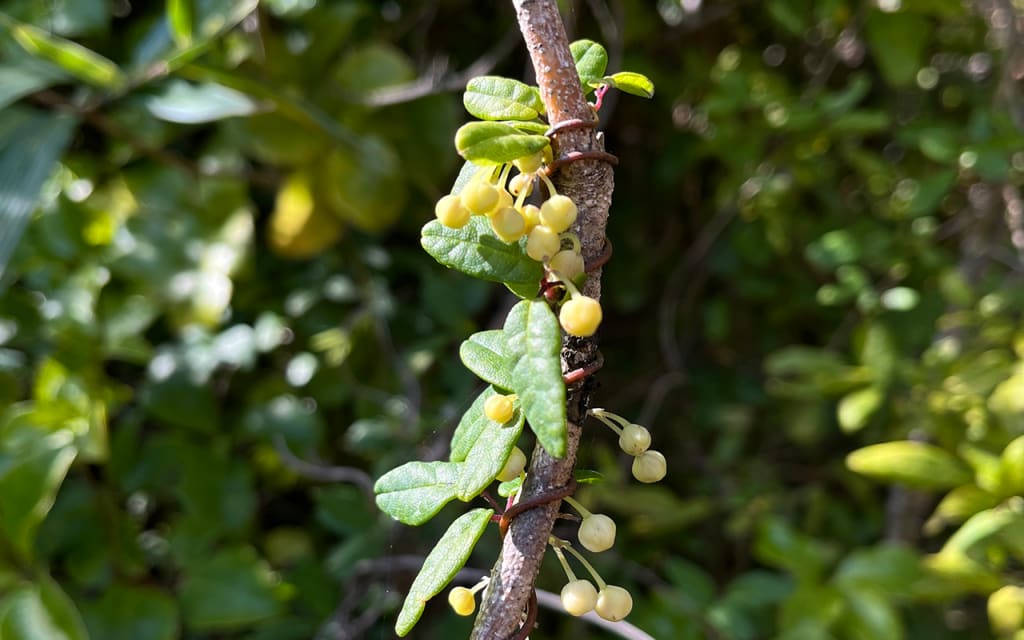Boquila trifoliolata: Nature’s Master of Disguise
The Leaf-Mimicking Vine in South America that Has Ecologists Baffled

In the temperate rainforests of southern Chile and Argentina hides a peculiar species of vine. Discovered early in the 2010s, this strange species called Boquila trifoliolata (locally titled the pilpil), has the incredible ability to mimic the leaves of other plant species it grows upon. The leaves of the pilpil, though naturally stubby and lobed, grow to nearly perfectly match the leaves of multiple other species near it, showcasing one of the most incredible feats of camouflage ever found in the plant kingdom.
But, compared to other examples of mimicry in the kingdom Plantae, the B. trifoliolata is notably more sophisticated in its ability to copy — at least, more sophisticated than the examples we’ve discovered thus far. Not only can an individual pilpil mimic multiple sorts of leaves on different parts of its vine, but it can also copy leaf shapes without touching or physically connecting to the plant it seeks to copy. To decipher how this incredible ability could come about and how the plant could manage to accomplish such incredible skill, researchers from all over the world set out to study the strange little organism.
How Does the Pilpil Use Its Incredible Mimicry Ability?
Mimicry has long been considered a valuable adaptation across all forms of life — a rather common tactic employed to hide from predators or better ambush prey. For the pilpil, it’s more likely the former than the latter, as the plant often replicates the leaves of species that are less often enjoyed by herbivorous rainforest critters like insects, gastropods, and other leafy herbivores native to the region. Studies on the plant since its discovery have found that the vine has the most signs of predation in locations where it is not mimicking other species.
There may, however, be additional benefits to mimicry of the leaves not yet considered. Though not technically a parasitic species, the authors of the study, Leaf Mimicry in a Climbing Plant Protects against Herbivory note several similarities between pilpil and Mistletoe which, in part, does its own version of mimicry to better obtain supplemental nutrients from its host trees. Unlike mistletoe, the plant does not bore into the host tree it grows upon, but it could be argued that growing along another distinct species of tree (or multiple species) would allow for better competition outcomes in the space which the host organism has already carved out as its own niche. If the host has a method of detecting the pilpil’s leaves, it could potentially be fooled into allowing the vine to have enough space to pick up sunlight for its similar leaves. And, if it has no way to detect a pilpil, the plant may naturally be able to grow along a path that steals sunlight that should be arriving at the host species’ leaves, effectively pushing the host plant out of the way. Much more research is necessary to understand the breadth of advantages this strange feature allows for our lovely little pilpil vine.
The Study That Made Us Ask: Can Plants See?
Since its discovery, the pilpil has become a fairly popular study subject, but none have gained as much notoriety as the [in]famous article published to Plant Signaling & Behavior in 2021. The charismatic implications of the study were quickly picked up by news stations, blogs, and websites, and a simplified synopsis of the study spread with it, eventually ending up on the TikTok FYP of this author about a month ago.
It makes sense that such a story would gain traction, as the idea of an organic plant mimicking a fake one is significantly fascinating, to say the least.
The researchers of the 2021 study, Jacob White and Felipe Yashimata, sought to determine the mechanism that the pilpil uses to reshape its leaves to the ones near it. By placing the pilpil next to an artificial plant, they tested whether the plant would still mimic the fake leaves, despite there being no way for the pilpil to obtain a chemical or bacterial signal, the preferred hypotheses of the team that discovered it, Gianoli and Carrasco-Ura of Chile. According to White and Yashimata, their experiment worked, and they were able to observe the leaves modifying to look more like their artificial neighbor.
The reasoning relayed in the paper is that the pilpil has a sort of primitive vision receptor, which they title the ocelli which, to them, provides strong evidence that suggests a sort of plant vision ability. In their writing, they point out that only part of the pilpil vines was in the ‘line of sight’ of the artificial plant, and only those leaves that had the opportunity to ‘see’ the fake leaves changed their shape.
Now, this certainly wouldn’t be the only example of plants being able to detect light in some form, a wide variety of plants do contain photoreceptors which the plants use to grow towards sources of light to gather more of their energy for photosynthesis. The pilpil, however, should the study above be confirmed, would be the most advanced example of this that we know of, and would require a much more sophisticated photoreceptor than what we’ve seen in other species of flora.
More research is actively being run, some by the team that had this study published in the first place, which will likely shed more much-needed light on the true nature of the strange, tropical vine. As the research currently stands, there is a great deal of valid criticism by other expert ecologists who have pointed out a wide array of potential biases and nonsequiturs that may have affected these incredible results. For now, we must take these results with a grain or two of salt. Researchers are not confidently certain that the pilpil can truly see, but it’s still notable that the plant has a way of perceiving far beyond what we’ve seen in many other plants.
How Does The Pilpil Figure Out How to Mimic Other Plants?
As you’ve likely guessed after reading the previous section, scientists are still working this bit out too. Though some studies have indicated potential methods by which the pilpil could manage such a feat, there simply isn’t yet enough information to know for sure.
Though there’s not enough research yet to know without a shadow of a doubt, many scientists seem to lean towards the alternative hypothesis, that there are bacterial communities that cooperate with pilpils to genetically communicate leaf shape. Honestly, that may be an even more interesting alternative idea, that a colony of microorganisms has adapted to essentially specialize in hedge-trimming a species to provide some benefit to itself in interspecies cooperation.
Alternatively, others believe that the pilpil has merely adapted to pick up some sort of chemical signals in the air emitted by nearby organisms, which could explain how the plant doesn’t need to be touching the host species to successfully replicate the leaf shape.
But, it’s definitely of note that the mimicry is not identical. A discerning human eye can quickly see differences between the pilpil’s replication and the original plant it seeks to copy. This little bit of evidence may help determine the true nature of the pilpil’s incredible skill.
--
No matter the true method behind their shape detection and shapeshifting, it’s still an incredible discovery just how expertly the pilpil can have its leaves pretend to be an organism it isn’t. Be it chemical, bacterial, visual, or some additional method that scientists have yet to consider, the amazing skill of the pilpil is a notable example of just how wonderful and complex plants and nature, in general, can be. The pilpil is a striking organism that highlights not only an incredible adaptation but also points to how much there is yet to be discovered in the field of ecology and science as a whole. Life is complex and grand and, even now, even after all the studies administered by scientists over millennia of human existence, there is still so much left to uncover.
--
Crossposted from Medium. Follow my account for new articles every other week :)
About the Creator
Olivia L. Dobbs
Science Enthusiast, Naturalist, Dreamer, Nerd.
I crosspost my Medium articles here :)
You can find my main account on Medium: https://medium.com/@oliviadobbs13
Check out my science! -> bit.ly/DobbsEtAl
Enjoyed the story? Support the Creator.
Subscribe for free to receive all their stories in your feed. You could also pledge your support or give them a one-off tip, letting them know you appreciate their work.






Comments (1)
This is so interesting! It isn’t strangling the other plants? Just mimicking? Many years ago scientists proved that plants RECOGNIZE people - they pulled some houseplants out by the roots. Nodes attached to other plants were watched. When those people came back I to the room the device on plants went wild - they recognized the attackers!!